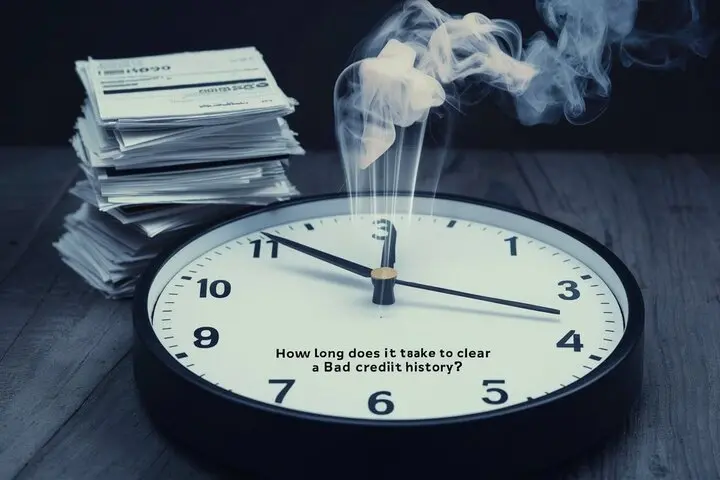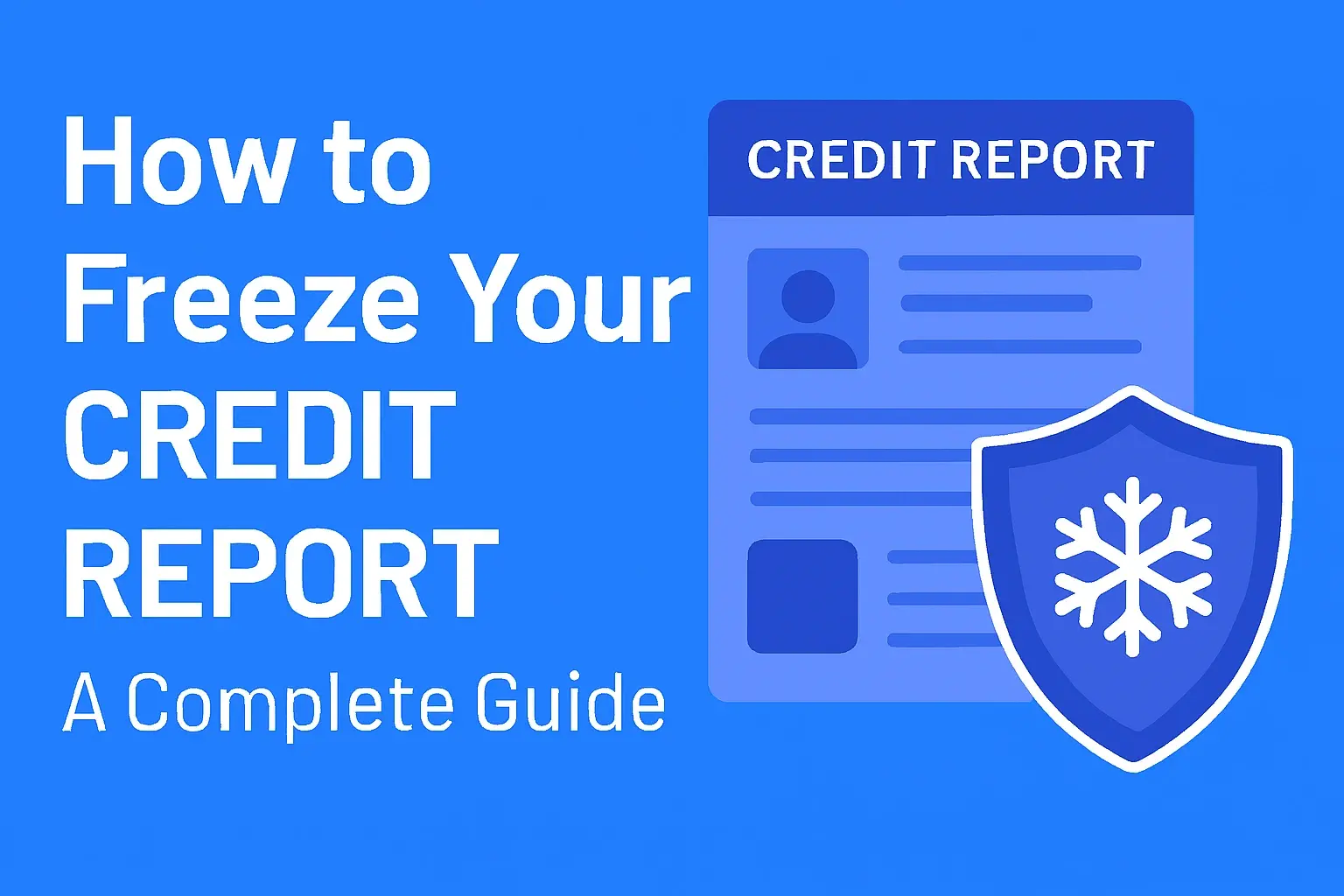-
Posted on: 15 Jul 2024

-
Understanding how long it takes to clear a bad credit history is crucial for financial recovery. This comprehensive guide breaks down the timelines, factors influencing improvement, and actionable steps you can take in 2025 to rebuild your creditworthiness.
Understanding Your Credit Reports and Scores
Before diving into timelines, it's essential to grasp what constitutes your credit history and how it's measured. Your credit report is a detailed record of your borrowing and repayment behavior, compiled by the three major credit bureaus: Equifax, Experian, and TransUnion. Lenders use this report to assess your creditworthiness. Your credit score, often a three-digit number, is a snapshot of the information on your credit report at a specific moment, predicting your likelihood of repaying borrowed money.
The Role of Credit Bureaus
In 2025, these bureaus continue to be the gatekeepers of your financial reputation. They collect data from lenders, creditors, and public records, consolidating it into individual credit files. It's vital to understand that each bureau may have slightly different information, which is why checking reports from all three is recommended.
Credit Scores: A Snapshot of Your Financial Health
Credit scores, most commonly FICO and VantageScore, are calculated using complex algorithms. While the exact formulas are proprietary, they heavily weigh factors like payment history, credit utilization, length of credit history, credit mix, and new credit inquiries. A higher score signifies lower risk to lenders, making it easier and cheaper to borrow money. Conversely, a low score indicates higher risk, potentially leading to loan denials or higher interest rates.
FICO Score Breakdown (2025 Overview)
FICO scores typically range from 300 to 850. The general ranges are:
- Excellent: 800-850
- Very Good: 740-799
- Good: 670-739
- Fair: 580-669
- Poor: 300-579
VantageScore Breakdown (2025 Overview)
VantageScores also range from 300 to 850, with similar interpretations:
- Excellent: 781-850
- Good: 661-780
- Fair: 601-660
- Poor: 500-600
- Very Poor: 300-499
Understanding these scores is the first step toward recognizing the impact of your credit history.
Key Factors That Impact Your Credit History
Several elements contribute to the health of your credit history. Recognizing these will help you understand why your credit might be in its current state and what needs to change.
Payment History: The Most Crucial Factor
This is the single most significant factor influencing your credit score. Making payments on time, every time, is paramount. Late payments, even by a few days, can significantly damage your score. The severity of the impact depends on how late the payment is (30, 60, 90 days past due) and how recent it is.
Credit Utilization Ratio: Keeping Balances Low
This refers to the amount of credit you're using compared to your total available credit. For example, if you have a credit card with a $10,000 limit and a balance of $3,000, your utilization ratio is 30%. Experts generally recommend keeping this ratio below 30%, and ideally below 10%, for optimal scores. High utilization suggests you might be overextended financially.
Length of Credit History: Time Heals (Slowly)
The longer you've had credit accounts open and in good standing, the better it is for your credit score. This demonstrates a history of responsible credit management over time. Average age of accounts and the age of your oldest account are both considered.
Credit Mix: Diversity in Borrowing
Having a mix of credit types, such as credit cards, installment loans (like mortgages or car loans), and perhaps a personal loan, can be beneficial. It shows lenders you can manage different forms of credit responsibly. However, this is a less significant factor than payment history or utilization.
New Credit and Inquiries: Be Cautious
Opening multiple new credit accounts in a short period or applying for credit frequently can negatively impact your score. Each hard inquiry (when a lender checks your credit for a loan or credit card application) can slightly lower your score. While the impact is usually small and temporary, it's wise to limit applications to when you genuinely need credit.
How Long Do Negative Items Stay on Your Credit Report?
This is the core of the user's question. The duration for which negative information remains on your credit report is governed by the Fair Credit Reporting Act (FCRA) in the United States. These timelines are generally consistent across the major credit bureaus.
Late Payments
Timeline: Typically 7 years from the date of the delinquency.
Details: A single 30-day late payment will fall off your report after seven years. However, more severe delinquencies (60, 90, 120+ days) will also remain for seven years from the original delinquency date. The impact of a 30-day late payment is less severe than a 90-day late payment, but both will eventually be removed.
Charge-Offs
Timeline: Typically 7 years from the date of the charge-off.
Details: A charge-off occurs when a creditor deems a debt uncollectible and writes it off as a loss. This is a serious negative mark. Even after a charge-off, you may still owe the debt, and the creditor can sell it to a collection agency, which can then report it separately.
Collections Accounts
Timeline: Typically 7 years from the date of the original delinquency that led to the collection. The FCRA states that a collection account cannot remain on your report for more than 7 years from the date of the original delinquency. However, if a collection agency opens a new account for the same debt, it could theoretically be reported for another 7 years from that new date, though this practice is scrutinized. For practical purposes in 2025, assume 7 years from the initial default.
Details: When a debt is sent to a collection agency, it appears as a separate item on your credit report. Paying off a collection account does not remove it from your report; it will be updated to show "paid collection," which is better than an unpaid one but still a negative mark. The clock for removal typically starts from the original delinquency date, not the date it went to collections.
Bankruptcies
Timeline:
- Chapter 7 Bankruptcy: 10 years from the filing date.
- Chapter 13 Bankruptcy: 7 years from the filing date.
Details: Bankruptcies are the most severe negative items. Chapter 7 is a liquidation bankruptcy, while Chapter 13 involves a repayment plan. Both have significant, long-lasting impacts on your credit report.
Foreclosures and Repossessions
Timeline: Typically 7 years from the date of the event.
Details: Losing your home to foreclosure or having a vehicle repossessed are serious financial setbacks that will appear on your credit report for seven years. They indicate a failure to meet significant financial obligations.
Judgments
Timeline: Varies by state and type of judgment, but often 7 years or longer. Public records can remain on reports for up to 7 years, or until the governing statute of limitations expires, whichever is longer. Some judgments can be renewed and remain on your record for much longer.
Details: A court judgment against you for an unpaid debt is a serious public record that will appear on your credit report.
Inquiries (Hard Inquiries)
Timeline: Typically 2 years from the date of the inquiry.
Details: While hard inquiries can temporarily lower your score, they are usually removed from your credit report within two years and have a diminishing impact over that time.
Settled Debts
Timeline: Typically 7 years from the date of the original delinquency.
Details: Settling a debt for less than the full amount owed is still a negative mark. The record will show that the debt was not paid in full, even if it's marked as "settled." The removal timeline is the same as for other delinquencies.
Important Note on Data Accuracy
It's crucial to remember that the FCRA sets the maximum time these items can remain on your report. However, errors can occur. Regularly reviewing your credit reports is essential to ensure accuracy and dispute any incorrect information. If a negative item is removed before its statutory limit, your credit can improve sooner.
The Timeline for Credit Improvement: What to Expect
Clearing a bad credit history isn't an overnight process. It requires consistent effort and patience. The timeline for seeing significant improvement depends on the severity of the negative marks and the actions you take.
Immediate Impact of Positive Actions
While negative items take time to fall off, positive actions start improving your score almost immediately. For example:
- Paying down credit card balances to reduce utilization can boost your score within a billing cycle.
- Making a payment on time will be reflected on your next credit report, preventing further damage.
Short-Term Improvement (3-12 Months)
In this period, you can expect to see noticeable changes if you are diligently:
- Paying all bills on time: This is the foundation. Even one late payment can stall progress.
- Reducing credit utilization: Aim to get your credit card balances below 30% and ideally below 10%. This can significantly improve your score within a few months.
- Disputing errors: If you find inaccuracies on your report, disputing them and getting them removed can provide a quick boost.
For someone with moderate credit issues, such as a few 30-day late payments and slightly high utilization, consistent positive behavior for 6-12 months could lead to a score increase of 50-100 points.
Medium-Term Improvement (1-3 Years)
By the one-year mark, the positive impact of your consistent good habits will become more pronounced. Lenders start to see a pattern of reliability.
- Establishing a longer positive payment history: Each on-time payment adds to this positive track record.
- Maintaining low credit utilization: Consistently keeping balances low demonstrates financial discipline.
- Aging of negative accounts: As negative items get older, their impact lessens. A 30-day late payment from three years ago has less weight than one from six months ago.
Someone with more severe issues, like a 60-day late payment or a collection account, might see substantial improvement in this timeframe as the negative items age and are offset by consistent positive actions. A score increase of 100-150 points is achievable.
Long-Term Improvement (3-7 Years)
This is where older, more severe negative items begin to fall off your report. This is often the period when individuals with significant credit problems can see their scores move into the "good" or "very good" categories.
- Removal of older negative items: As 7-year-old delinquencies, charge-offs, or collections disappear, your credit report becomes cleaner.
- Building a long credit history: The average age of your accounts increases, further strengthening your profile.
- Demonstrated long-term responsibility: Several years of perfect payment history and low utilization paint a very favorable picture for lenders.
For someone who had a bankruptcy (Chapter 7), the 10-year mark is significant. While it stays on the report for a decade, its impact diminishes over time. By year 7 or 8, with consistent positive behavior, a person could qualify for many types of credit.
Example Scenarios (2025 Data)
Let's look at hypothetical scenarios:
Scenario A: Mild Credit Issues
Starting Point: Score of 620. History includes two 30-day late payments (2 years ago) and credit utilization at 45% ($4,500 on a $10,000 limit). No other major issues.
Actions Taken: Immediately pays down credit cards to 15% utilization. Continues to pay all bills on time. Avoids new credit applications.
Expected Timeline:
- 3-6 Months: Score could rise to 660-680 due to reduced utilization.
- 1-2 Years: Score could reach 700-720 as the late payments age and positive history builds.
- 7 Years: Late payments fall off, score could exceed 750.
Scenario B: Moderate Credit Issues
Starting Point: Score of 550. History includes one 60-day late payment (1 year ago), a collection account for $1,200 (original delinquency 3 years ago), and credit utilization at 60% ($6,000 on a $10,000 limit).
Actions Taken: Pays down utilization to 20%. Negotiates a payment plan for the collection account (or pays it off). Continues to pay all bills on time. Disputs any errors found.
Expected Timeline:
- 6-12 Months: Score could rise to 590-620 as utilization drops and the collection is marked as paid.
- 1-3 Years: Score could reach 650-680 as the 60-day late payment ages and the collection account's impact lessens.
- 3-7 Years: Score could climb to 700+ as the collection account and the original delinquency date for the late payment fall off the report.
Scenario C: Severe Credit Issues
Starting Point: Score of 480. History includes a Chapter 7 bankruptcy (filed 4 years ago), multiple 90-day late payments within the last 5 years, and a charge-off account. Credit utilization is high on remaining accounts.
Actions Taken: Focuses on building a completely new positive credit history. May use a secured credit card. Pays all new bills on time, every time. Avoids any new credit applications until score improves significantly.
Expected Timeline:
- 1-3 Years: Score might slowly climb to 550-600 as new positive payment history is established and older negative items begin to age.
- 7 Years: Most severe negative items (late payments, charge-off) will have fallen off. Score could reach 650-700.
- 10 Years: Bankruptcy falls off. Score could exceed 700-750, assuming consistent positive behavior throughout.
These timelines are estimates. The actual speed of improvement depends on your specific situation and your commitment to financial responsibility.
Strategies to Accelerate Your Credit Repair in 2025
While time is a necessary component, several proactive strategies can significantly speed up the process of clearing a bad credit history.
1. Obtain and Review Your Credit Reports Regularly
Action: Get your free credit reports from Equifax, Experian, and TransUnion at AnnualCreditReport.com. Review them at least annually, or more frequently if you are actively working on repair.
Why it Accelerates Repair:
- Identify Errors: Inaccuracies are common. Incorrect late payments, accounts that aren't yours, or outdated information can artificially lower your score.
- Dispute Errors Promptly: The FCRA mandates that credit bureaus investigate disputes within 30-45 days. Removing errors can provide an immediate score boost.
- Understand Your Negative Items: Knowing exactly what's on your report helps you prioritize which issues to address.
2. Dispute Inaccurate Information
Action: If you find any errors, file a dispute with the credit bureau(s) reporting the inaccuracy. You can do this online, by mail, or by phone. Provide any supporting documentation you have.
Why it Accelerates Repair: Removing incorrect negative information is the fastest way to improve your score, as it eliminates a false reason for lenders to deny credit.
3. Pay Down Credit Card Balances Aggressively
Action: Focus on reducing your credit utilization ratio. Aim to get all credit card balances below 30% of their limits, and ideally below 10%.
Why it Accelerates Repair: Credit utilization is a significant factor in credit scoring. Lowering it can lead to a substantial score increase within one to two billing cycles.
Example: If you have a $5,000 balance on a card with a $10,000 limit (50% utilization), paying it down to $1,000 (10% utilization) will have a dramatic positive impact.
4. Make All Payments On Time, Every Time
Action: Set up automatic payments or reminders for all your bills—credit cards, loans, utilities, rent (if reported).
Why it Accelerates Repair: Payment history is the most critical factor. Consistent on-time payments build a positive track record that lenders value highly. This prevents further damage and is the bedrock of any credit repair effort.
5. Consider a Secured Credit Card
Action: If you have a low credit score or no credit history, a secured credit card requires a cash deposit that typically becomes your credit limit. Use it for small, everyday purchases and pay the balance in full each month.
Why it Accelerates Repair: This is an excellent way to build or rebuild credit history. Responsible use is reported to the credit bureaus, demonstrating your ability to manage credit. Many secured cards graduate to unsecured cards after a period of good behavior.
Example (2025): A secured card from Capital One or Discover can be a good starting point. Ensure the card issuer reports to all three major bureaus.
6. Become an Authorized User (with Caution)
Action: Ask a trusted friend or family member with excellent credit to add you as an authorized user on one of their well-managed credit cards.
Why it Accelerates Repair: The positive history of that account (on-time payments, low utilization) can be added to your credit report, potentially boosting your score. However, if the primary cardholder mismanages the account, it can hurt your credit.
Important Caveat: Only do this with someone you trust implicitly, and ensure they understand the implications. Some newer scoring models (like FICO 10) may weigh authorized user accounts differently, but it can still be beneficial in many cases.
7. Negotiate with Creditors and Collection Agencies
Action: If you have outstanding debts or accounts in collections, contact the creditor or agency to negotiate a settlement or payment plan.
Why it Accelerates Repair:
- Debt Settlement: While settling for less than the full amount still appears as a negative mark ("settled for less than full balance"), it's often better than an unpaid collection account. It can stop further collection activity and potential legal action.
- Payment Plans: A structured payment plan can help you manage debt and demonstrate commitment to repayment.
Tip: Always get any settlement or payment agreement in writing before making payments. Ask if they will agree to remove the collection account from your report entirely in exchange for payment (a "pay for delete" agreement). While not guaranteed, some agencies may agree to this.
8. Avoid New Credit Applications (Unless Strategic)
Action: Resist the urge to apply for multiple credit cards or loans simultaneously. Each hard inquiry can slightly lower your score.
Why it Accelerates Repair: Focus on improving existing accounts and managing them well. Only apply for credit when you genuinely need it and have a reasonable chance of approval. Shopping for a mortgage or auto loan within a short period (e.g., 14-45 days, depending on the scoring model) is usually treated as a single inquiry for rate comparison purposes.
9. Consider Credit-Builder Loans
Action: Some credit unions and community banks offer credit-builder loans. You make payments on the loan, but the funds are held in an account and released to you once the loan is paid off. The payments are reported to credit bureaus.
Why it Accelerates Repair: Similar to secured credit cards, these loans demonstrate responsible repayment behavior and help build a positive credit history.
10. Understand the Impact of Medical Debt (2025 Changes)
Action: As of 2025, there have been some positive changes regarding medical debt reporting. Paid medical collections are no longer included on credit reports. Unpaid medical debt under $500 also has reporting restrictions. However, significant medical debt can still impact your credit.
Why it Accelerates Repair: Focus on resolving medical bills promptly, especially those under $500, as they are less likely to significantly harm your credit. For larger bills, negotiate payment plans or seek assistance programs.
Monitoring Your Progress and Maintaining Good Credit
Rebuilding credit is a marathon, not a sprint. Consistent monitoring and maintenance are key to long-term financial health.
Regularly Check Your Credit Reports
Action: Continue to obtain your free credit reports annually from each bureau. Some credit monitoring services also offer regular score updates.
Why it's Important:
- Track Improvements: See your score increase and note how specific actions impact it.
- Detect New Issues: Catch any new fraudulent activity or reporting errors quickly.
- Stay Motivated: Seeing progress can be a powerful motivator to stay on track.
Understand Your Credit Score Factors
Action: Familiarize yourself with the components that make up your credit score (payment history, utilization, etc.). Many credit monitoring services provide a breakdown of your score factors.
Why it's Important: Knowing which areas need the most attention helps you prioritize your efforts and make informed financial decisions.
Maintain Low Credit Utilization
Action: Once you've lowered your credit utilization, make a conscious effort to keep it low. Pay down balances before the statement closing date if possible, or pay multiple times a month.
Why it's Important: High utilization is a quick way to see your score drop. Maintaining low balances demonstrates consistent financial discipline.
Continue On-Time Payments
Action: This cannot be stressed enough. Make every payment on time, every time. Automate payments where possible.
Why it's Important: Payment history is the most heavily weighted factor. A single late payment can undo months or even years of progress.
Be Mindful of New Credit
Action: Only apply for credit when you truly need it. Avoid opening multiple new accounts in a short period.
Why it's Important: Too many inquiries can signal financial distress to lenders and lower your score temporarily.
Build a Longer Credit History
Action: Keep older, well-managed accounts open, even if you don't use them frequently. Avoid closing credit cards unless there's a compelling reason (e.g., high annual fee with no benefits).
Why it's Important: The length of your credit history is a factor. Older accounts, especially those with a positive payment history, contribute to a more robust credit profile.
Review Your Credit Reports for Changes
Action: Pay attention to any changes on your credit reports. Are new accounts appearing that you didn't open? Are balances changing unexpectedly?
Why it's Important: This is crucial for detecting and preventing identity theft or fraudulent activity, which can severely damage your credit.
Comparison: Maintaining vs. Rebuilding Credit
Here's a look at the difference in approach:
Aspect Rebuilding Credit Maintaining Credit Primary Goal Remove negative items, establish positive history, increase score significantly. Keep score high, preserve excellent creditworthiness, access best financial products. Focus Aggressive debt reduction, dispute errors, potentially secured cards/credit-builder loans. Consistent on-time payments, low utilization, strategic use of credit. Risk Tolerance Higher (e.g., using secured cards, negotiating settlements). Lower (avoiding high utilization, minimizing new inquiries). Time Horizon Months to several years. Ongoing, lifelong. Key Metric Score increase, removal of negative items. Score stability/improvement, low risk profile. The strategies for maintaining good credit are essentially the continuation of the positive habits developed during the rebuilding phase.
When to Seek Professional Help for Credit Issues
While many individuals can successfully repair their credit on their own, there are situations where professional assistance might be beneficial.
Signs You Might Need Professional Help
- Overwhelmed by Debt: If you have multiple debts, are struggling to make minimum payments, and don't see a clear path to repayment, a non-profit credit counseling agency can help.
- Complex Credit Issues: Dealing with bankruptcies, foreclosures, or significant identity theft can be daunting. Professionals may have specialized knowledge.
- Lack of Time or Knowledge: If you lack the time, understanding, or confidence to navigate the credit repair process yourself.
- Persistent Errors: If you've tried disputing errors multiple times without success, a credit repair organization might be able to assist.
Types of Professional Assistance
Non-Profit Credit Counseling Agencies
What they do: Offer budgeting advice, debt management plans (DMPs), and financial education. They work with your creditors to potentially lower interest rates and consolidate payments.
Cost: Often free or low-cost, with some services having a small monthly fee for DMPs.
Recommendation: Look for agencies accredited by the National Foundation for Credit Counseling (NFCC) or the Financial Counseling Association of America (FCAA).
Credit Repair Organizations (CROs)
What they do: Legally, they can help you dispute inaccurate information on your credit reports and advise you on how to improve your credit. They cannot remove accurate negative information.
Cost: Fees vary widely, and they often charge monthly. Be wary of companies promising guaranteed results or removal of accurate negative items.
Important Considerations:
- Credit Repair Organizations Act (CROA): This federal law provides consumer protections. CROs cannot charge you before they perform services, must provide a written contract, and cannot make false claims.
- Beware of Scams: If a company guarantees to remove all negative items or suggests you create a new credit identity (e.g., using an Employer Identification Number - EIN), it's likely a scam.
- Do Your Research: Check reviews and ensure the organization is reputable.
Debt Settlement Companies
What they do: Negotiate with your creditors to settle your debts for less than the full amount owed. You typically make payments to the settlement company, which then pays your creditors.
Cost: Fees are usually a percentage of the debt they settle.
Important Considerations:
- Negative Impact: Settling debts for less than the full amount will be reported on your credit report and can significantly lower your score.
- Potential for Lawsuits: If creditors don't agree to a settlement, they may pursue legal action.
- Fees: Fees can be substantial.
Recommendation: Generally, direct negotiation with creditors or non-profit credit counseling is preferred over debt settlement companies for most consumers.
When NOT to Seek Professional Help
If your credit issues are minor (e.g., a few late payments that are aging, slightly high utilization) and you have the time and understanding, you can likely repair your credit effectively on your own. The most important factors are consistently paying bills on time and keeping balances low, which are actions you control directly.
For most individuals in 2025, the path to clearing a bad credit history involves a combination of diligent financial habits, regular monitoring, and strategic actions. While negative items have set removal dates, your proactive efforts can significantly accelerate the process and build a strong financial future.











